
NEWS BITES
OUR NEW ‘GREEK STREET EATS’ is A GO!
GREEK STREET EATS by Love Food is here!
Well this is fun!…creating a new modern Summer menu, inspired by our Greek Heritage and of course by our beautiful local Avalon/Bilgola Beach home.
As two food-loving and health-loving sisters, we put our minds together - which can include some ‘polite-talking-very-loud / some-would-say-'‘shouting’ at each other!’ - haha!…as of course we are very complimentary in the kitchen.
Jokes aside, it’s pretty exciting to see much of what we make for ourselves and our families each week on the new GREEK STREET EATS menu…ready to serve locals.
Inspired by the fabulous Greek Islands that we all love.
SUNDAYS 1.30PM AVALON BEACH BOWLO
〰️
SUNDAYS 1.30PM AVALON BEACH BOWLO 〰️
Entrees | Mains | Desserts | Sides
We have something for everyone on the menu. We created it to suit all ages and all palettes.
You can start with some punchy flavour marinated ‘Olly Olives’, Trio of Dips or Mezze Plate.
Or for something more substantial we have:
our 8-hour Slow Roast Lamb Pita
marinated Char Chicken Bowl
our homemade ‘Pastitsio’ aka Greek baked pasta
or ‘Spanakopita’ Spinach & Cheese Filo Pie.
To share, we have a tasty selection in our Signature Grazing Platter, depending on how hungry you are.
Finish it off with our scrumptious selection of freshly baked desserts, Orange Cake (gluten free), rich Chocolate Cake (flourless) and traditional Baklava (traditional Greek)
“Inspired by our heritage and our meraki (life passion for delicious food!), we have created a collection of fresh, flavoursome, nutritious & delicious light meals for a lazy afternoon with your family and friends.”
Top 50 VITALITY TIPS
Are you ready for the New You?
We have put together our 1 pager of Top 50 Vitality Tips to help your health and fitness get a kick-start!
Download it now for FREE HERE to help you get going.
Our 'New You' tips are just little things we have picked up through our own research, study and have tested by putting them into practice ourselves.
We love sharing and helping others on their own health and fitness journey. What you eat and drink eat day powers how you think and what you do...it's all linked!
“If you don’t find time for your health and fitness, it will make it for you...that’s the reality.”
Check out our 'Bundles Of Joy' food delivery service for select customers who want to eat and feel better...it could be the best decision of your life!
Imagine the freshest 5-star restaurant quality meals delivered to your door!…full of flavour and healthy! WOW.
Think of it like a personalised chef catering service - but priced for true value and for every day.
Not frozen, not made a month ago, not raw ingredients you have to chop and cook...just back to basics healthy ready-to-eat full of flavour nourishment for you and your family today!
We call it “REAL READY MEALS’, not all the mass-produced junk out there!
Along with health and fitness guidance tailored to you and your goals - some of them are tough, so be warned!...haha.
Here’s the first 3 steps…
“STEP 1 - first decide you want a better you.”
“STEP 2 - make a small change and stick it no matter what.”
“STEP 3 - clean out your cupboard and fridge, chuck it all!”
Where to start?
There’s so many things we know we should do better for a healthier, fitter lifestyle. Sometimes it’s a bit tricky on where to start?
To help you, we have put together our Top 50 Tips for healthily living.
The first 5 will make or break it.
You download it for FREE HERE now to help you get going - ‘Love Food - Top 50 tips - The New You (1 page A4, pdf doc).
Check out our Menu below - for easy online ordering to your door!
Be sure to check out our BUNDLES OF JOY - Weekly Subscription Delivery Service…it’s life changing!
“Restock your fridge with life changing foods.”
Tips for DELICIOUS & HEALTHY wedding food
“Everything was just perfect! We were so busy on the beach taking photos - and getting a bit sandy! - that we hardly ate in the end. But our guests were absolutely raving about the food!..the epic presentation, all the different dishes, the dessert spread…it was perfect. Thank you both again for making it so special!”
SOME TIPS IN PLANNING YOUR SPECIAL WEDDING DAY
Your wedding day is a special day to celebrate with your family and friends.
There are not many times in your whole life, that everyone you love and care about are there all together to celebrate with you!
It can be a very busy time, and stressful for some, but here at LOVE FOOD we are very experienced in crafting the perfect combinations of foods and flavours to suit your style of wedding occasion and your menu preferences.
Why choose LOVE FOOD for your special wedding day:
We start with the foods you love and what your guests will love
We will present a few menu options for you to choose
We can adjust to suit all budgets and numbers of guests
We will offer you a selection of complimentary tasting plates to sample well before
We only serve healthy and delicious combinations of fantastic flavours
We only do fresh on the day with the finest fresh ingredients
We can do stunning grazing style or full sit down
We style our food preparation to suit your wedding style
We are on to it to adjust and adapt to guests needs on the day
We understand all dietary requirements and adjust accordingly
We love serving up special healthy kids meals
We love epic celebrations and thrive in the moment
We adjust to any venue - inside / outside / traditional / beach / traditional / modern
We adjust to suit your numbers of guests - small and intimate 10-20+ / medium 50+ / larger 100+
We can support with table setting needs (plates, glasses, cutlery)
We can support with table styling needs (to make it look amazing!)
We support with all tidying up and cleaning for the food
You will not have to worry about the food on the day
Your guest will all be full and very satisfied
Your guests will be raving about the food!!!
“We wanted something a bit different and the ladies at LOVE FOOD over delivered!”
WEDDING FOOD TIPS
Having great food at your wedding can make a big difference in the overall experience for you and your guests.
Here are some tips:
Choose a Menu That Reflects You: Select dishes that are meaningful to you as a couple or that represent your cultural backgrounds.
Consider Dietary Restrictions: Ensure there are options for guests with dietary restrictions or preferences, such as vegetarian, vegan, gluten-free, etc.
Quality Over Quantity: It's better to have fewer menu items that are well-prepared and delicious than a large variety that may not be as high quality.
Seasonal and Local Ingredients: Use seasonal and local ingredients for freshness and to support local businesses.
Interactive Food Stations: Consider adding interactive food stations like a mezze platters, or sushi bar where guests can customise their meals.
Late-Night Snacks: Offer late-night snacks to keep guests satisfied, such as mini meals, sliders, platters or a dessert bar.
Signature Drinks: Create signature cocktails or mocktails that reflect your taste and style.
Presentation Matters: Pay attention to the presentation of the food, as it will enhance the dining experience.
Professional Catering: Hire a professional catering service with experience in wedding receptions to ensure everything runs smoothly.
Tasting Session: Before finalising the menu, schedule a tasting session with the caterer to ensure you're happy with the food.
Remember, the goal is to create a memorable dining experience that reflects your personality and makes your guests feel welcome and well-fed.
DIETARY CONSIDERATIONS FOR YOUR GUESTS
When planning a wedding menu, it's very important to consider dietary restrictions and preferences to ensure all guests can enjoy the meal.
To help you, here’s a dietary considerations list to keep in mind - we live and breathe this each day at LOVE FOOD, so leave it to us to take care of your guests.
Vegetarian: Offer a variety of vegetarian options, such as salads, roasted vegetable dishes, a wide selection for starters and mains
Vegan: Provide vegan-friendly dishes, such as roasted vegetable platters, grain salads, tofu or tempeh dishes, and dairy-free desserts.
Gluten-Free: Include gluten-free options, such as gluten-free bread or pasta, salads, grilled meats or fish, and flourless desserts.
Lactose Intolerant: Offer lactose-free or dairy-free alternatives for dishes that contain dairy, such as soy or almond milk or coconut milk for coffee and tea.
Nut Allergies: Be mindful of nut allergies and avoid using nuts or peanuts in dishes. Consider labeling dishes that may contain nuts.
Other Allergies: Inquire about other common allergies among your guests, such as shellfish or soy, and ensure there are alternative options available.
Religious Dietary Restrictions: Be aware of any religious dietary restrictions, such as avoiding pork or serving kosher or halal meals if needed.
Low-Sodium or Low-Fat: Provide options that are lower in sodium or fat for guests with specific dietary needs.
Children's Menu: Consider offering a separate children's menu with kid-friendly options like our special Greek inspired pasta-bake.
Tasting Menu: If you're offering a tasting menu, ensure that there are vegetarian and other dietary options available for each course.
By considering these dietary considerations, you can ensure that all of your guests feel included and can enjoy their meal at your wedding.
WEDDINGS STYLE IDEAS TO HELP WITH YOUR PLANNING
There are many styles of weddings, each with its own unique characteristics and charm.
Here are some popular styles:
Traditional Wedding: A classic wedding style typically includes formal attire, a religious or civil ceremony, and traditional customs like cake cutting, bouquet toss, and first dance.
Vintage Wedding: This style is inspired by a specific era, such as the 1920s or 1950s, and features antique decor, lace, pearls, and other vintage elements.
Rustic Wedding: A rustic wedding often takes place outdoors or in a barn or farm setting, featuring natural elements like wood, burlap, and wildflowers.
Bohemian Wedding: A boho wedding is free-spirited and eclectic, often featuring natural elements, floral crowns, flowing fabrics, and a relaxed atmosphere.
Modern Wedding: A modern wedding is sleek and contemporary, featuring clean lines, minimalistic decor, and innovative touches.
Destination Wedding: A destination wedding takes place in a location away from the couple's hometown and often includes a smaller guest list and extended celebrations.
Beach Wedding: A beach wedding is held on a beach or near the ocean, with a casual and relaxed atmosphere, often featuring nautical or tropical elements.
Garden Wedding: A garden wedding takes place in a botanical garden, park, or other outdoor garden setting, featuring lush greenery and natural beauty.
Fairytale Wedding: Inspired by fairytales, this style features romantic and whimsical elements like princess-like gowns, castle venues, and magical decor.
Cultural or Ethnic Wedding: This style reflects the traditions and customs of a particular culture or ethnicity, incorporating traditional attire, customs, and cuisine.
These are just a few examples, and many couples choose to mix elements from different styles to create a wedding that is uniquely their own.























“Wow! Everything you did - apart from the incredible food selection - just made the day magical! THANK YOU so much. Our friends were raving about the food!”
BENEFITS OF GARLIC
Garlic is one of those few wonder ingredients for any cooking…it’s quite magical!
We know some people don’t like garlic and find it just too strong, whereas most people can’t get enough of it. Usually, if you are on the healthier / fitter side of the equation, or on the journey, your body craves garlic for its fresh zest and spicy vitality…in a fresh juice, in a soup or in your cooking.
Roasting garlic transforms the flavour and can be a good way to start.
You know, roasting garlic transforms its flavor, texture, and aroma, making it milder, sweeter, and creamier than raw garlic.
Here's what happens when you roast garlic:
Flavor: Roasting garlic mellows its pungency, resulting in a sweet and nutty flavor with caramelized undertones. The harshness and spiciness of raw garlic are significantly reduced.
Texture: The cloves become soft and spreadable, similar to a paste or puree. The individual cloves can easily be squeezed out of their skins after roasting.
Aroma: Roasted garlic has a rich, savory aroma that is less intense and overpowering compared to raw garlic. It is often described as warm and inviting.
Nutritional changes: While roasting garlic may cause some loss of nutrients due to heat exposure, it retains many of its health benefits, including its antioxidant properties.
Uses: Roasted garlic can be used in various ways, such as spreading it on bread, mixing it into mashed potatoes or pasta dishes, adding it to sauces and dressings, or using it as a flavor enhancer in soups and stews.
To roast garlic, you can simply cut the top off a head of garlic to expose the cloves, drizzle it with olive oil, wrap it in foil, and bake it in the oven until the cloves are soft and golden brown.
All the different ways to use garlic.
Garlic is a versatile ingredient that can enhance the flavor of a wide variety of dishes, both savory and sweet.
Here are some ways to use garlic in your food and drinks:
Sautéed or fried: Add minced or chopped garlic to a hot pan with some oil or butter and cook until fragrant and lightly golden brown. This is a common technique used as a base for many dishes.
Roasted: Roasted garlic has a sweet, mellow flavor. Use it as a spread for bread, mix it into mashed potatoes or pasta dishes, or add it to sauces and dressings.
Raw: Raw garlic has a sharp, pungent flavor. It can be used in salad dressings, salsas, guacamole, or as a seasoning for meats and vegetables.
Pickled: Pickled garlic can be a flavorful addition to salads, sandwiches, or cheese platters. It can also be used as a garnish for cocktails or added to marinades and sauces.
Powdered: Garlic powder is a convenient way to add garlic flavor to dishes. It can be sprinkled on meats, vegetables, popcorn, or used to season sauces and soups.
Infused: Garlic-infused oil can be used to add flavor to dishes without the need to use fresh garlic. It can be drizzled over pasta, pizza, or used in salad dressings.
In drinks: While not as common, garlic can be used in drinks for its flavor and potential health benefits. For example, garlic can be infused into vinegar for a tangy drink or blended into smoothies with other ingredients like ginger and spinach for a nutritious boost.
When using garlic, it's important to note that a little goes a long way, as it has a strong flavor. Adjust the amount of garlic based on your personal preference and the dish you are preparing.
At LOVE FOOD, we use garlic wherever we can…especially in our Soups! And when we make or order a juice (which we don’t have as much because it still has a lot of natural sugar!), we would always ask for extra garlic!
For dinner, when we make a stir-fry, we would always have a punch of garlic in it.
So, we would encourage you to get as much garlic into your daily diet - you body will love you for it!
Health benefits of garlic
Garlic is renowned for its health benefits, which stem from its sulfur-containing compounds, such as allicin, which are formed when garlic is crushed or chopped. It has been celebrated for its culinary and medicinal properties for centuries.
Here are some of the potential benefits of garlic:
Nutrient-rich: Garlic is low in calories but packed with nutrients like manganese, vitamin C, vitamin B6, selenium, and fiber.
Antioxidant properties: Garlic contains antioxidants that help protect your cells from damage caused by free radicals. This may reduce the risk of certain chronic diseases.
Heart health: Garlic has been linked to several heart-healthy benefits, including reducing blood pressure, improving cholesterol levels, and reducing the risk of heart disease.
Antibacterial and antiviral: Garlic has natural antibacterial and antiviral properties, which may help the body fight off infections, including the common cold and flu.
Anti-inflammatory: Some studies suggest that garlic may have anti-inflammatory effects, which could benefit conditions like arthritis.
Immune system support: Garlic may help strengthen the immune system, making it easier for your body to fight off infections.
Cancer prevention: Some research indicates that garlic consumption may be associated with a reduced risk of certain types of cancer, particularly those affecting the digestive system.
Improved athletic performance: Some athletes use garlic supplements to potentially improve exercise performance and reduce exercise-induced fatigue.
Improved bone health: Garlic may have a positive effect on bone health by increasing estrogen levels in females, which could help prevent osteoporosis.
Potential blood sugar control: Some studies suggest that garlic may help improve insulin sensitivity and regulate blood sugar levels, which could benefit those with diabetes or at risk of developing it.
FIND YOUR MERAKI
‘Meraki’ IS aN INCREDIBLE Greek word WE LOVE AND LIVE BY, meaning…
to do something with soul, creativity, or love;
to put something of yourself in your work.
To love what you do, is to do it well.
For us at LOVE FOOD, the word Meraki is very important and is the essence of what we do…how we live!
Love and Food for us are a life passion - a heritage that is passed through the generations. Simple tips from our ya-ya, (γιαγιά) our mum and great grandmother, and pa-pouse (pappoús), our dad, and great grandfather, and the whole family tree that goes back into the ages.
Yes we have modernised it and added to it, as we carry on the traditions - particularly from a natural food, health and fitness perspective. But you know, much of what we have learnt from our heritage goes back to these basics - those raw food essentials that underpin great health. Today we are so lucky and grateful to have everything available to us - fresh food, a wide mix of global cultures on our doorstep - we are so lucky!
But of course, modern daily pressures kick in and some of our known habits get watered down.
At LOVE FOOD, we live what we do - we embrace clean living principles, family, and fresh food to give us strength and vitality.
And we know its our calling to help others in this quest for the ‘ultimate vitality and happiness’…through healthy food and fitness.
The Greek word Meraki means to do tasks with soul, creativity and love…that’s what drives us at LOVE FOOD.
Have you ever found yourself accessing that elusive state of flow? Everything fits right into place. Well, the Greek verb/adverb meraki refers to something rather similar.
Meraki is used by Greeks to describe scenarios when a person has really put a part of themselves into something. It could be cooking that comes from the heart, composing a piece of music that comes straight from the soul, or writing an article that expresses thoughts openly, honestly, and vulnerably.
Meraki highlights the intimate connection between humans and their work.
Think about, what is your Meraki?
Some people spend their whole life trying to find their ‘Meraki’, when its been right in from of them the whole time…usually because they never quite got to it!
Go back to when you were a kid, or when you had an incredible moment of being full alive and invigorated!…naturally.
Everyone is searching for something - that’s human nature. To search, to create…to live…to do.
There’s a great quote that helps you define your Meraki, which goes something like this…
What is something you love?
What is something you are good at?
What is something you can make a living from?
What is something the world needs?
Our passion has always been ‘helping people’ one way of another…sure, we have got side-tracking into the more corporate world, but we now concentrate our efforts on helping people through our ‘healthy food and fitness guidance’…from babies, to toddlers, to teenagers, to mums and dads, to families, to the fit/unfit and the healthy/unhealthy…we are all on a journey.
It’s a simple and powerful mission. And something we love doing each day!
Running a small business is not easy - there are many parts to juggle and all the ups and downs - but we know through the feedback from our clients that we are living our purpose with incredible passion…that is our Meraki.
We encourage you to pause and find or commit to your core driving purpose and passion!
And of course, be in touch if you want to talk more about fitness and nutrion for you or your family.
A&V
KIDS IN THE KITCHEN
Embrace your wiggly-self, serve up a rainbow and negotiate with the power of the ‘magic cracker!’
Eating habits start young.
As a parent or carer or food provider, we believe it’s our calling / duty to help educate (and entertain!) our kids with different foods and flavours. It’s not always easy, because as babies, to toddlers, to teenagers, all kids go through their growth journey along with their taste buds!
And like most things, we can all influence our kids attitude to food - positively and negatively.
-
Educate and entertain with food in the kitchen. Get your kids involved early with simple food prep - sure, let them make a little mess, the learning will do wonders for the future.
Be silly! Be the ‘Wiggles’ entertainer, singing little funny tunes to engage and inspire the fun side…it will go along way when you need to put your foot down and start negotiating with the ‘magic cracker’!
-
Try something new each week. If you are eating the same food week in week out, then you need to try and mix it up a little.
Treats are just that - treats. You must limit sweets, soft drinks and fast food…this is not real food! Remember the more your kids eat this stuff, the harder you will have to work to wean them off it.
Plus, as you fill the void with healthier food, your kids will get an appreciation themselves for the good and the bad, and will make better choices themselves.
-
Give up once and you have to work three times as hard to bring it back.
Start with the focus, that you will do whatever it takes to entertain and try different foods, using some of the tips and tricks we have proven to work below.
“Our passion for food began as kids and our passion for healthy food starts with kids.”
Be aware of how your attitude to food and cooking flows to your kids.
Some people don’t really love cooking, or preparing food - it carries more of a negative feeling.
Your attitude to food will directly influence your children’s attitude to food. It’s not always easy, but it’s good to be aware of how you feel about it as that will influence what you pass on.
Do you see cooking as a chore?
Do you see thinking about lunches and dinners as something you dread?
Do you struggle with your children with their fussy eating?, even though you have ‘slaved over the stove’!
As a parent, your attitude toward food can significantly influence your children's eating habits and attitudes toward food. Children are highly influenced by their parents' behaviors, including how they approach food, their food choices, and their attitudes toward eating.
Here are some ways your attitude towards food and the food making process, will impact your children:
Role modeling: Children learn by observing their parents. If they see you enjoying a variety of healthy foods and having a positive attitude toward meals, they are more likely to mimic these behaviors.
Food preferences: Your food preferences can influence what foods your children are exposed to and develop a taste for. Introducing a variety of nutritious foods early on can help shape their preferences.
Eating environment: The atmosphere at mealtimes, including whether meals are enjoyed together as a family, can affect children's attitudes toward food. A positive, relaxed mealtime environment can promote healthy eating habits.
Attitudes toward body image: Your attitude toward your own body and how you talk about body image can impact your children's body image and relationship with food.
Approach to treats and indulgences: How you approach treats and indulgences can influence your children's attitudes toward these foods. Teaching moderation and balance is important.
Response to picky eating: How you respond to picky eating behaviors can affect your children's willingness to try new foods. Encouraging but not forcing them to try new foods and being patient can help.
It's important to be mindful of your own attitudes and behaviors around food and eating, as these can have a lasting impact on your children's eating habits and relationship with food. Setting a positive example and creating a healthy eating environment can help promote a lifetime of healthy eating habits for your children.
Talk to your friends who love cooking and get their simple tips to help. Children love simple!
Get home delivery of your groceries so you don’t have to waste time walking the supermarket and also throwing things into the trolley you probably don’t need.
Get help by trying something different in the kitchen. Try a few basic new recipes and get your kids involved in the making.
The stages of taste bud development
The development of taste buds in children is a fascinating process that begins before birth and continues into early childhood.
Here's a general overview of what happens with taste buds during a child's stages of development:
Prenatal development: Taste buds begin to form around the 7th week of gestation. By the 13th to 15th week, taste buds are fully developed and functional. At this stage, the fetus can taste the amniotic fluid, which can be influenced by the mother's diet.
Infancy (0-12 months): Newborn babies have taste preferences that are innate and evolutionary, such as a preference for sweet flavors and a dislike for bitter tastes, which may have developed to ensure the consumption of breast milk. Babies are born with around 10,000 taste buds, which is more than adults have.
Toddlerhood (1-3 years): Toddlers begin to develop more refined taste preferences and may show increased acceptance of certain flavors and textures while rejecting others. This is a critical period for shaping their food preferences and eating habits.
Preschool age (3-5 years): By this age, children's taste preferences continue to evolve, influenced by exposure to a variety of foods and cultural influences. They may become more open to trying new foods but may also become more selective in their food choices.
School-age (6-12 years): Taste preferences become more stable during this period, although they can still be influenced by environmental factors such as peer pressure and media influences. Children may develop stronger likes and dislikes for certain foods.
Throughout these stages, it's important for children to have exposure to a variety of flavors and textures to help develop a diverse palate. Encouraging healthy eating habits early on can help set the stage for a lifetime of good nutrition.
What are the unhealthiest foods for kids?
At LOVE FOOD we always try our hardest to not only know a persons dietary preferences, but to also know what’s best for them, particularly kids.
We don’t compromise when it comes to long-term nutrition…we just don’t make it or serve it.
Sure, we all have the odd treat here or there, but there are some foods we will never touch or never serve to people or even our own family! We all know the right and wrongs of good and bad foods! But what happens is, the day-to-day creeps in and bad habits evolve.
The unhealthiest foods for kids are typically those that are high in unhealthy fats, sugars, and salt, and low in essential nutrients. These foods can contribute to poor health outcomes, including obesity, dental cavities, and an increased risk of chronic diseases later in life.
And don’t take the front food label words as ‘health, healthier’ on face value…food labelling is advertising! There are a ton of food products out there that are far from healthy. Read the nutritional panel on the back and look at the top three ingredients, and where it’s made.
We all know this, but just as a ‘reality check’, the most unhealthy foods for kids include:
Fast food: Fast food is often high in unhealthy fats, sugars, and salt, and low in essential nutrients. Regular consumption can contribute to weight gain and other health issues. DON’T BUY IT - OR LIMIT IT.
Sugary drinks: Beverages like soda, fruit drinks, and energy drinks are high in sugar and can contribute to weight gain, tooth decay, and an increased risk of type 2 diabetes. DON’T BUT IT - OR LIMIT IT AS A TREAT - EVEN BOTTLED JUICE! …TRY AND SWITCH TO SPARKING WATER / WATER / OR WATER DOWN JUICE.
a standard 250ml can of V energy drink typically contains around 27-30 grams of sugar (4 teaspoons)
a standard 355 ml can of Coca-Cola contains approximately 39 grams of sugar (5 teaspoons)
Candy and sweets: These foods are high in sugar and calories and offer little to no nutritional value. They can contribute to weight gain and dental cavities. A TREAT.
Processed snacks: Packaged snacks like chips, cookies, and crackers are often high in unhealthy fats, sugars, and salt, and low in essential nutrients. CHECK THE INGREDIENTS.
Fried foods: Foods that are deep-fried or fried in unhealthy oils are high in unhealthy fats and can contribute to weight gain and other health issues. THE HIGHEST CALORIES OF ALL…LIMIT IT.
Sweetened breakfast cereals: Many breakfast cereals are high in sugar and low in fiber and other nutrients. Choosing a healthier breakfast option can help set a positive tone for the rest of the day. FULL OF SUGAR!…LIMIT IT.
Frozen meals and prepackaged foods: These foods are often high in unhealthy fats, sugars, and salt, and low in essential nutrients. They can contribute to poor health outcomes if consumed regularly. THEY ARE CHEAP, QUICK AND EASY FOR A REASON…CHECK THE INGREDIENTS.
It's important to note that these foods can be enjoyed in moderation as part of a balanced diet. However, regular consumption of these foods can lead to health issues. Encouraging kids to eat a variety of fruits, vegetables, whole grains, and lean proteins can help promote their overall health and well-being.
If your kids are eating the majority of this list above, then we are not giving them the best in life.
FUN FACT: Sugar starts the addition process in our body, for life!
How to change what my kids eat?
Here’s a few real-life examples of how LOVE FOOD approaches the fussiest of eaters!
We have experimented with our own kids and with the thousands of kids we have had the pleasure of serving and influencing (and sometimes entertaining) with food in our partner daycare centres and primary schools.
There are a few principles we live by with food and children - which is not always easy some days.
We start with the end result in mind - EATING SOMETHING NEW or BETTER FOR YOU.
We start knowing we will never give in - NO WAY, EVER!
We start knowing we will never compromise on a bad meal - NO WAY, EVER!
We have a ‘whatever it takes’ approach to engage and entertain - YES, embrace your wiggly-self!
We watch the room, but always adjust for each child - ADAPT and CONQUER!
Fun In The Kitchen #1
MAKE IT ENTERTAINING…be a Wiggle!
We sing, dance & play with animation with our mini-me …. so put joy into your mood & the food will come to life for your little one.
Don’t just think about eating…think about entertaining.
Tone of voice
Engaging with the making
Turn it into a fun game
Fun In The Kitchen #2
COLOUR THE PLATE…like a rainbow!
We eat first with our eyes & so does your little one.
Look at the plate…. Does it look inviting? Is there colour, is there familiar foods, is there something new?
Under 5’s can be very fussy eaters…the majority of the time this comes from the influence of others (a role model, teacher, parent, sibling, friend)
Triggers can cause the ’push away the plate’ action, with a refusal pout!
Look at the plate by…
Texture - new & familiar
Taste - simple & complex
Presentation - colour & more colours
Smell - simple & not overwhelming
it all starts with the energy we put into it….have fun!
Fun In The Kitchen #3
NEGOTIATE EVERYTHING…the magic cracker!
The art of negotiating goes a long way at meal time.
I use the ‘Magic Cracker’ in our partner daycare centres, where we are the food provider.
“If you finish your bowl of food, you get a magic cracker!”
What is the magic cracker???
It’s just a simple a rice craker…but now its ‘magic!’.
if they don’t finish, they don’t get the cracker this time, if they do they get rewarded.
The ‘magic’ works every time!
And the the first time, if a child doesn’t eat all their food, they actually don’t get a magic cracker that day.
But you watch…
The next day it’s all gone!
Goodluck.
We LOVE FOOD and we LOVE helping people LOVE their FOOD!
Reach out to us, if you need help with your childs eating - or just some tips to help refresh your approach!
WHY WE LOVE GINGER
Ginger is one of those ingredients that smacks out a punch every time!
It’s a bit like chilli or wasabi…the more you have it, the more you want that ginger punch (in a good way!).
Here at Love Food, we use ginger all the time in our cooking, especially in our LOVE FOOD SOUP RANGE.
And Ginger is so versatile in its uses - in juices, in soups. in stir-fry…in so many things.
Like all good things that come in and out and back in on trend, Ginger has been used for its medicinal properties for centuries and is known for its many health benefits, including:
Digestive Health: Ginger can help relieve nausea, indigestion, and bloating. It may also help improve digestion by increasing the movement of food through the stomach.
Anti-Inflammatory Effects: Ginger has potent anti-inflammatory properties, which may help reduce inflammation and pain in conditions such as osteoarthritis and rheumatoid arthritis.
Immune Boosting: Ginger contains antioxidants that can help strengthen the immune system, reducing the risk of infections and illnesses.
Nausea Relief: Ginger is commonly used to help relieve nausea and vomiting, including morning sickness in pregnant women and nausea related to chemotherapy.
Heart Health: Some studies suggest that ginger may help lower blood pressure and cholesterol levels, reducing the risk of heart disease.
Antibacterial Properties: Ginger has natural antibacterial properties that may help fight against harmful bacteria and reduce the risk of infections.
Pain Relief: Ginger may help reduce muscle pain and soreness, making it a popular remedy for athletes and those with chronic pain conditions.
Weight Management: Some studies suggest that ginger may help with weight loss by increasing metabolism and reducing appetite.
Improved Brain Function: Some research indicates that the antioxidants and bioactive compounds in ginger may help improve brain function and protect against age-related decline.
Cancer Prevention: While they keep saying (!) more research is needed, some studies suggest that ginger may have potential anti-cancer properties, particularly in preventing certain types of cancer like colorectal cancer.
Get Ginger in your weekly FOOD intake and your body will LOVE you for it!
Benefits of EATING Soup FOR Losing Weight
Coming into winter, we LOVE making our home-made Soups! They have become one of our signature categories for their thick intense flavour and health benefits.
Keep an eye out online to order, or via one of our specialty outlet partners, for our 2024 LOVE FOOD SOUP MENU. Our soups are made thick, packed full of dense nutrients, and packed full of fresh herbs, ginger and garlic…please try one and let us know…they are like a meal!
We have the favourites, such as our ‘Green Goddess’, which is a stunning tasting soup full of goodness. Which ever one you LOVE, all our soups are a fantastic way to fill you up, nourish your body, with the added benefit of losing or controlling your weight.
If you are eating canned soup - well, that’s just lazy, sorry! We have never met a canned soup that cuts the mustard - never. They are full or sugar, water and fake flavour and were made weeks/months ago. Sure, if you are off-the-grid or trekking or something, go for it, but it doesn’t take much effort or money to make a simple fresh home-made soup yourself.
Once you eat home-made soup regularly you will get used the ‘fresh taste’ difference. And with so many easy-to-make, home-made soup recipes, you can do it yourself pretty quickly in a big pot at home (or a slow cooker), and blend it up or keep it chunky. Plus, there are so many fresh-made soup varieties around - but remember, not all are created equal, that’s for sure! …we’ll share a few recipes in future posts.
All LOVE FOOD Soups are small-batch made, with ultra-fresh ingredients, with NO form of additives or preservative…all the taste is from the natural herbs, spices and vegetables. We also go to great lengths to experiment with different ‘layers of flavour’ to get that perfect combination.
Eat soup to stay fit and healthy….full-stop!
If you want one quick-hit way to get healthier, fitter and lose or control your weight…just eat soup as your main meal for 1 week.
Every classic or fad diet in history has soup in it…and we research and observe all forms of eating, from all across the world - but we always go back to the proven and timeless ‘Alkaline Lifestyle’ principles.
Soup can be a beneficial addition to a weight loss plan for several reasons:
Low in Calories: Many soups are low in calories, especially broths and vegetable-based soups, which can help reduce overall calorie intake.
High in Water Content: Soups are hydrating and can help you feel full with fewer calories, which may reduce the risk of overeating.
High in Fiber: Soups that contain vegetables, beans, and whole grains are typically high in fiber, which can help you feel full and satisfied, reducing the likelihood of snacking between meals.
Nutrient Dense: Soups can be a good source of vitamins, minerals, and antioxidants, especially if they contain a variety of vegetables and lean proteins.
Easy to Digest: The liquid nature of soup makes it easy to digest, which can be beneficial for those with digestive issues or sensitive stomachs.
Versatile: Soups can be easily customized to suit individual tastes and preferences, making them a flexible option for a weight loss diet.
Warm and Comforting: A warm bowl of soup can be satisfying and comforting, which can help reduce cravings for less healthy comfort foods.
Portion Control: Eating soup as a starter or main course can help with portion control, as it can help you feel full without consuming excess calories.
Convenient: Soups can be prepared in advance and stored for later use, making them a convenient option for busy days.
Encourages Mindful Eating: Eating soup slowly and savoring each spoonful can encourage mindful eating, which can help prevent overeating.
have your tried our free healthy eating audit?
Over the years you get a good feel for where people are at, by just asking a few simple questions - what they eat? how they exercise? and everything in between.
It’s something we have always done - just out of interest really, but especially when we are travelling (not as much these days!) - listening and learning about foods and cooking styles across different cultures. Our Greek Mum says ‘the Greeks invented everything!’…yes Mum, just like all the other wonderful cultures across our world. And in Australia we are very lucky as we have all foods on our doorstep…plus fresh everything!
It’s always been a passion of ours to showcase healthy ‘back to basics’ food as longer term medicine - getting our bodies back to a more alkaline state (vs the modern eating ‘acidic diet’ powered by lots of false information, fast-everything and lazy-convenience). Sure it can be a very topical one, especially with someone that is really struggling or not in a good fit/healthy state, and sure there is always the traditional vs non-traditional medical discussions to be had. But centuries of fresh raw ingredients in some diets driving longevity don’t lie!…the evidence is walking around you.
Our Mum is living proof too - she’s 86 years wise and takes no pills and is very switched on and healthy. Sure, a little grumpy some days when the weather turns - but fundamentally a strong cookie!
Whatever your health and fitness state, we are here to just help you be a little bit better each day. That’s all. Simple, open, direct, but caring, guidance that can change lives…Love + Food = Better Life.
Food (and drink) is medicine…the right food (and drink).
The wrong food will slowly kill you over time - sounds a bit harsh, but it's a fact - unless you’re the Rolling Stones! But it’s funny you know, everything tends to operate on a lifecycle and even the roughest and toughest characters go through a health crisis at some point and come out the other side to a more healthy balanced way (a more alkaline state).
So to help kick off the conversation - if you are ready to have it (some are not ready…yet) - or just want to test the waters of where you are at, we have put together a simple ‘Healthy Eating Audit’ or mini-survey to capture your current state and offer some immediate suggestions for FREE. For those who want to continue our support, then we do have our ongoing Nutrition Coaching, Fitness Coaching, and our new ‘Bundles Of Joy’ subscription food delivery program, tailored to what you need (not always exactly what you want!…a bit like a ‘5 star restaurant delivered to your door, but without all the extended frills and butter (!), with a menu that has just been to the gym!’…fresh, healthy but full of flavour like no other.
Simply click on the link below. It takes about 5-10 minutes depending on how in-depth you want to go.
We read each one - just the two sisters - and treat your information confidentially to help you.
Have a go! The first step is the hardest.
Love + Food = Angelika + Verena
P.S. we have some tip reminders below of all the benefits of eating a little healthier each day and moving a bit more each day…small steps add up to a lot!
Eating a healthy diet has numerous benefits for your overall health and well-being.
A lot of people don’t eat as healthy, because of these type of myth statements - that we love busting!
MYTH 1 - “healthier food doesn’t taste as good!”
WRONG! we only make full of flavour and people start raving about how they can’t believe how good it tastes and be so healthy.
MYTH 2 - “healthier food takes longer to make!”
WRONG! let’s time each other? we can make a healthier meal in minutes, faster than anything you make…it’s the fresh ingredients in your fridge and layering to put together.
MYTH 2 - “healthier food is harder to make!”
WRONG! in most cases it’s actually easier, once you have the ingredients and use our ‘layering principles’.
MYTH 3 - “it’s harder to shop for healthier food!”
WRONG! just go to the outside aisles in the supermarket first (not the middle) and you will find lots of nourishment.
MYTH 4 - “healthier food costs more!”
WRONG! if you know what you are buying, in fact many ingredients are a lot cheaper. Certified Organic is great and we love it, but that’s not everything.
MYTH 5 - “healthier food doesn’t last as long!”
WRONG! yes that’s actually a good thing!, because you are not eating all the preservatives in it…fridge or freezer can easily keep left overs. Test this - if you don’t eat a burger within 15 minutes it doesn’t look that great. Ok, sure pizza the next day can taste good as a naughty treat!
MYTH 6 - “my kids won’t eat it!”
WRONG! Invite us to lunch or dinner…we have never (as in never) met a today or teenage that we can’t get onto our food. We run the food at leading daycare centres and the teachers are amazed at what we can do with kids and getting them to try and eat new things…it always comes down to 3 things…1) focused effort, 2) make it playful, 3) negotiation!
Being a kid these days is tough - but we believe that many of todays kids challenges can be improved by working on 1) diet, 2) movement and 3) technology…if as parents we can do better in these 3 areas our kids will get a taste of the ‘back to basics’ approach to life that has many benefits.
Some of the key benefits of eating healthy - apart from feeling better - include:
Improved Physical Health: A healthy diet rich in fruits, vegetables, whole grains, and lean proteins can help reduce the risk of chronic diseases such as heart disease, diabetes, and cancer.
Weight Management: Eating a balanced diet can help you maintain a healthy weight or lose excess weight, which is important for overall health and reducing the risk of obesity-related diseases.
Better Digestive Health: A diet high in fiber from fruits, vegetables, and whole grains can improve digestion and reduce the risk of constipation, bloating, and other digestive issues.
Stronger Immune System: A diet rich in vitamins, minerals, and antioxidants can help strengthen your immune system, making you less susceptible to infections and illnesses.
Improved Mental Health: Eating a healthy diet can positively impact your mood and mental health. Nutrient-rich foods can help regulate neurotransmitters in the brain, improving mood and reducing the risk of depression and anxiety.
Increased Energy Levels: A balanced diet provides the nutrients your body needs for energy production. Eating regular, balanced meals can help maintain steady energy levels throughout the day.
Better Skin Health: A diet high in fruits, vegetables, and healthy fats can help improve skin health, reducing the risk of acne, eczema, and other skin conditions.
Improved Sleep: Eating a healthy diet and maintaining a regular eating schedule can help improve sleep quality and duration, leading to better overall health and well-being.
Longer Lifespan: Studies have shown that a healthy diet is associated with a lower risk of premature death, meaning that eating well can help you live a longer, healthier life.
Improved Quality of Life: Overall, eating a healthy diet can improve your quality of life by reducing the risk of chronic diseases, improving mood and mental health, and increasing energy levels, among other benefits.
GO SOBER AND CHANGE YOUR LIFE
Going sober, or massively reducing your alcohol intake will change your life - GUARANTEED!
Everyone can and will benefit from it. It’s not an easy step for some - even to admit it or have the conversation - but when you get there you will wonder why it took you so long.
‘Drinking, slowly kills people’…that’s just how it is. Yet, we live in a society where drinking is fun / cool.
Not drinking alcohol, or reducing from alcohol consumption (i.e. 3 alcohol-free days), has many health benefits:
1. Improved Liver Health: Alcohol is processed by the liver, and excessive alcohol consumption can lead to liver damage, including fatty liver, hepatitis, and cirrhosis. Abstaining from alcohol can help improve liver function and reduce the risk of liver disease.
2. Better Heart Health: Heavy alcohol consumption is associated with an increased risk of heart disease, including high blood pressure, heart failure, and stroke. Not drinking alcohol can help lower these risks and improve heart health.
3. Reduced Risk of Cancer: Alcohol consumption is linked to an increased risk of certain types of cancer, including liver, breast, colon, and esophageal cancer. Abstaining from alcohol can help reduce the risk of developing these cancers.
4. Weight Management: Alcoholic beverages are often high in calories and can contribute to weight gain. Not drinking alcohol can help reduce calorie intake and support weight management efforts.
5. Improved Mental Health: Alcohol can have a negative impact on mental health, contributing to depression, anxiety, and other mental health disorders. Abstaining from alcohol can help improve mood and overall mental well-being.
6. Better Sleep: Alcohol can disrupt sleep patterns and lead to poor sleep quality. Not drinking alcohol can help improve sleep duration and quality.
7. Enhanced Immune Function: Excessive alcohol consumption can weaken the immune system, making the body more susceptible to infections. Abstaining from alcohol can help support a healthy immune system.
8. Improved Skin Health: Alcohol can dehydrate the skin and contribute to premature aging. Not drinking alcohol can help improve skin health and appearance.
9. Financial Savings: Alcohol can be expensive, and abstaining from alcohol can lead to significant financial savings over time.
10. Improved Relationships: Alcohol consumption can sometimes strain relationships and lead to interpersonal conflicts. Abstaining from alcohol can help improve relationships with family and friends.
Overall, not drinking alcohol can have numerous health benefits and contribute to overall well-being. If you choose to drink alcohol, it's important to do so in moderation and be aware of the potential risks associated with alcohol consumption.
Do this together with regular daily exercise and better healthier food and you will feel a million dollars.
‘Cleaner living’ doesn’t mean, eat or drink well all day, have a veggie dinner and then get plastered - you are kidding yourself!
If in doubt ring me! We can talk straight about it when you are ready.
Love, Verena
Make Apple Cider Vinegar Your Friend
By making Apple Cider Vinegar (ACV) your friend, you will be tapping into an abundant source of quick and easier natural benefits.
It’s very effective for general weight loss and well-being, and its extremely good value.
When you first start taking it, ease into it by diluting it in warm water, then as your become more ‘hard core’ you’ll start swigging it from the bottle like Verena!
take it in water
take it direct
spinkle some on a salad
put a dash into any cooking
put on a damp tissue and dam on a cut (or toenail)
…the list goes on and on!!!
We are fans of the BRAGGS brand, which is available in all supermarkets and chemists, and health food stores.
Apple cider vinegar (ACV) has been touted for its health benefits, although scientific evidence supporting these claims is limited (but remember they want you to think/say that as its a real ‘back to basics’ and cost effective natural remedy!
Some potential benefits of taking apple cider vinegar include:
1. Weight Loss: Some studies suggest that ACV may help with weight loss by promoting a feeling of fullness and reducing calorie intake. However, more research is needed to confirm this effect.
2. Blood Sugar Control: ACV may help improve insulin sensitivity and lower blood sugar levels, which could be beneficial for people with diabetes or those at risk of developing diabetes.
3. Digestive Health: ACV may aid digestion by increasing stomach acid production, which can help break down food more efficiently.
4. Heart Health: Some studies suggest that ACV may help lower cholesterol and improve heart health, although more research is needed to confirm these effects.
5. Antimicrobial Properties: ACV has antimicrobial properties and may help inhibit the growth of harmful bacteria. It has traditionally been used as a natural remedy for infections and wounds.
6. Skin Health: Some people use ACV topically to treat skin conditions such as acne, eczema, and sunburns, although more research is needed to confirm its effectiveness.
7. Hair Health: ACV is sometimes used as a hair rinse to improve hair health and shine, although scientific evidence supporting this use is limited.
8. Toe Nail Health - this might sound weird, but my husband swears by it and see’s immediate impact for any nasty toenail issues.
It's important to note that while ACV may offer some health benefits, it is not a cure-all, and its effects can vary from person to person. It should be consumed in moderation, as excessive intake can have negative effects such as tooth enamel erosion and digestive issues. As with any supplement, it's best to consult with a healthcare professional before starting ACV to discuss its potential benefits and risks.
The Benefits Of Gluten-Free Eating
Those that only can gluten free - like myself - will know the challenges finding the right food, especially when you are out to dinner.
Gluten-free eating has gained popularity in recent years, and while it's essential for those with celiac disease or gluten sensitivity, the benefits for the general population are less clear.
BENEFITS OF GLUTEN-FREE EATING FOR EVERY ONE
Here are some potential benefits of gluten-free eating that may apply to everyone:
1. Improved Digestive Health:
Some people find that reducing or eliminating gluten can help with digestive issues such as bloating, gas, and diarrhea, even if they don't have celiac disease or gluten sensitivity.
2. Increased Energy Levels:
For individuals with undiagnosed gluten sensitivity, eliminating gluten from their diet may lead to improved energy levels and overall well-being.
3. Potential Weight Loss:
Switching to a gluten-free diet may lead to weight loss for some people, especially if it involves cutting out processed foods high in gluten and replacing them with whole, nutrient-dense foods.
4. Better Nutrient Absorption:
In individuals with celiac disease or gluten sensitivity, eliminating gluten can improve nutrient absorption, as damage to the intestines caused by gluten can hinder the absorption of essential nutrients.
5. Reduced Inflammation:
Some research suggests that gluten may contribute to inflammation in the body, so eliminating it from the diet could help reduce inflammation for some individuals.
6. Improved Mental Clarity:
Some people report improved mental clarity and focus when following a gluten-free diet, although more research is needed to confirm this effect.
It's important to note that a gluten-free diet can be restrictive and may lead to nutrient deficiencies if not followed carefully. If you're considering going gluten-free, especially if you don't have celiac disease or gluten sensitivity, it's a good idea to consult with a healthcare professional or nutritionist to ensure you're meeting your nutritional needs.
Several groups of people may choose to eat gluten-free for various reasons:
1. Celiac Disease:
People with celiac disease must avoid gluten because it triggers an immune response that damages the lining of the small intestine.
2. Non-Celiac
Gluten Sensitivity: Some individuals experience symptoms similar to those of celiac disease when they consume gluten but do not test positive for celiac disease or wheat allergy. They may choose to avoid gluten to alleviate these symptoms.
3. Wheat Allergy:
People with a wheat allergy must avoid wheat, which contains gluten, to prevent allergic reactions.
4. Autoimmune Disorders:
Some autoimmune disorders, such as Hashimoto's thyroiditis and rheumatoid arthritis, are thought to be influenced by gluten consumption. Some individuals with these conditions may find symptom relief by following a gluten-free diet.
5. Autism Spectrum Disorder:
Some caregivers of individuals with autism believe that a gluten-free diet can improve symptoms, although scientific evidence is limited and mixed.
6. Weight Loss and General Health:
Some individuals without a specific medical condition choose to follow a gluten-free diet for weight loss or general health reasons. However, there is limited evidence to support the effectiveness of this approach for these purposes.
It's important to note that following a gluten-free diet can be challenging, as gluten is found in many common foods. People considering a gluten-free diet should consult with a healthcare professional or nutritionist to ensure they are meeting their nutritional needs.
Some athletes choose to eat a gluten-free diet for various reasons, but it's not a universal practice among athletes.
Here are some reasons why athletes might choose to go gluten-free:
1. Potential Performance Benefits:
Some athletes believe that eliminating gluten from their diet can reduce inflammation, improve digestion, and enhance overall performance. However, scientific evidence supporting these claims is limited.
2. Digestive Comfort:
Gluten can be difficult to digest for some people, leading to gastrointestinal issues. Athletes may choose to go gluten-free to avoid these digestive problems.
3. Management of Autoimmune Conditions:
Athletes with autoimmune conditions that are influenced by gluten consumption, such as celiac disease or Hashimoto's thyroiditis, may choose to follow a gluten-free diet to manage their condition and reduce symptoms.
4. Personal Preference:
Like the general population, some athletes may choose to eat gluten-free as a personal preference or as part of a broader dietary approach, such as a paleo or Whole30 diet.
It's important for athletes considering a gluten-free diet to ensure they are still meeting their nutritional needs for training, performance, and recovery. Working with a sports dietitian or healthcare professional can help ensure that athletes are fueling their bodies appropriately while following a gluten-free diet.
The Benefits of Vegetarian & Keto
These words get thrown around a lot these day! Well in fact they have been around for decades.
A vegetarian diet, which excludes meat, poultry, and seafood, can offer several health benefits:
1. Weight Management: Vegetarian diets tend to be lower in calories and saturated fats while being higher in fiber, which can help with weight management.
2. Heart Health: Vegetarian diets are often rich in fruits, vegetables, whole grains, nuts, seeds, and legumes, which are associated with a reduced risk of heart disease. They are also typically lower in cholesterol and saturated fats.
3. Lower Risk of Chronic Diseases: Vegetarian diets have been linked to a lower risk of developing chronic diseases such as type 2 diabetes, hypertension, and certain types of cancer.
4. Improved Digestive Health: A vegetarian diet that includes plenty of fiber-rich foods can improve digestion and reduce the risk of constipation and other digestive issues.
5. Better Blood Sugar Control: Vegetarian diets can help improve blood sugar control, which is beneficial for individuals with diabetes or those at risk of developing the condition.
6. Lower Blood Pressure: Vegetarian diets, particularly those high in fruits, vegetables, and whole grains, may help lower blood pressure.
7. Reduced Environmental Impact: Plant-based diets typically have a lower carbon footprint and require fewer resources, making them more environmentally sustainable than diets high in animal products.
8. Ethical and Animal Welfare Reasons: Many people choose a vegetarian diet for ethical reasons, to reduce animal suffering and promote animal welfare.
It's important for vegetarians to ensure they are getting adequate nutrients that are typically found in animal products, such as protein, iron, calcium, vitamin B12, and omega-3 fatty acids. Planning meals carefully and possibly considering supplements can help ensure nutritional needs are met on a vegetarian diet.
The ketogenic (keto) diet is a high-fat, low-carbohydrate diet that has gained popularity for its potential health benefits:
1. Weight Loss: The keto diet can lead to rapid weight loss, primarily due to a reduction in carbohydrate intake, which leads to a state of ketosis. Ketosis is a metabolic state where the body burns fat for fuel instead of carbohydrates.
2. Improved Blood Sugar Control: The keto diet may help improve blood sugar levels and insulin sensitivity, which is beneficial for people with diabetes or those at risk of developing diabetes.
3. Increased Energy Levels: Some people report increased energy levels and mental clarity on the keto diet, possibly due to the stable blood sugar levels and the use of ketones as a fuel source for the brain.
4. Appetite Suppression: The high-fat content of the keto diet, along with the presence of ketones, can help suppress appetite, leading to reduced calorie intake.
5. Improved Cholesterol Levels: The keto diet can lead to an increase in HDL (good) cholesterol and a decrease in LDL (bad) cholesterol, which may reduce the risk of heart disease.
6. Epilepsy Treatment: The keto diet has been used for decades to treat epilepsy, particularly in children who do not respond to medication. It is thought to reduce seizures by changing the brain's energy source to ketones.
7. Potential Cancer Benefits: Some research suggests that the keto diet may have anti-cancer effects, although more studies are needed in this area.
8. Neurological Disorders: The keto diet has shown promise in the treatment of other neurological disorders, such as Alzheimer's disease and Parkinson's disease, although more research is needed.
It's important to note that the keto diet is not suitable for everyone, and it can be challenging to maintain long-term due to its restrictive nature. Individuals considering the keto diet should consult with a healthcare professional or dietitian to ensure it is safe and appropriate for their needs.
Sugar-Free Is Critical For Healthier Living
Sugar….mmm. Ok where to start!? We all know that eating sugar is bad but it’s everywhere we look and in pretty much everything we eat.
Someone once told me, when you are shopping you only walk down the first and the end aisle of the supermarket and get out quick! That way you skip the middle and all the sugar-filled items which are usually in the middle and all the foods that are good for us are around the edge! Try it.
BENEFITS OF GOING SUGAR-FREE
Reducing sugar intake can have several benefits for your health:
1. Weight management:
Sugary foods and beverages are often high in calories and can contribute to weight gain. Cutting back on sugar can help you manage your weight or even lose weight if needed.
2. Improved dental health:
Sugar is a major contributor to tooth decay. Eating less sugar can help protect your teeth and gums.
3. Better mood and energy levels:
While sugar can give you a quick energy boost, it's often followed by a crash. Eating less sugar can help stabilize your energy levels and improve your mood.
4. Reduced risk of chronic diseases:
A diet high in sugar has been linked to an increased risk of chronic conditions such as type 2 diabetes, heart disease, and certain types of cancer. Cutting back on sugar can help reduce these risks.
5. Improved skin health:
Some studies suggest that eating less sugar can improve skin conditions such as acne and overall skin health.
6. Better digestion:
High sugar intake can contribute to digestive issues such as bloating, gas, and diarrhea. Eating less sugar may help improve your digestion.
7. Enhanced immune function:
Some research suggests that excessive sugar intake can weaken the immune system. Eating less sugar may help support a healthy immune system.
8. Improved overall diet quality:
Cutting back on sugar often means replacing sugary foods with healthier options such as fruits, vegetables, whole grains, and lean proteins, which can improve your overall diet quality.
It's important to note that not all sugars are bad. Natural sugars found in fruits, vegetables, and dairy products are part of a healthy diet and provide essential nutrients. The focus should be on reducing added sugars found in processed foods, beverages, and sweets.
TIPS TO GO SUGAR-FREE (or less sugar) IN YOUR DAILY INTAKE:
Going sugar-free or reducing your sugar intake can be a beneficial choice for your health. Here are some tips to help you make the transition:
1. Read labels:
Sugar can be found in many processed foods under different names like sucrose, high-fructose corn syrup, dextrose, and more. Check the ingredients list to identify added sugars.
2. Cook at home:
Prepare your meals and snacks at home using whole, unprocessed ingredients. This way, you can control the amount of sugar in your food.
3. Choose unsweetened options:
Opt for unsweetened beverages such as water, herbal tea, or black coffee. Choose unsweetened dairy alternatives and avoid flavored yogurts and oatmeals.
4. Use natural sweeteners sparingly:
If you need to sweeten your food or drinks, consider using natural sweeteners like stevia, monk fruit, or erythritol in moderation.
5. Focus on whole foods:
Base your diet around whole foods like fruits, vegetables, whole grains, lean proteins, and healthy fats, which are naturally low in added sugars.
6. Be mindful of condiments and sauces:
Many condiments and sauces, such as ketchup, BBQ sauce, and salad dressings, can be high in sugar. Look for low-sugar or sugar-free alternatives.
7. Limit processed snacks:
Snack foods like cookies, candies, and granola bars are often high in added sugars. Opt for whole food snacks like nuts, seeds, fruits, or vegetables instead.
8. Plan your meals:
Planning your meals ahead of time can help you make healthier choices and avoid impulse purchases of sugary foods.
9. Find sugar-free alternatives:
Look for sugar-free or low-sugar versions of your favorite foods and beverages. Just be mindful of artificial sweeteners and their potential effects on your health.
10. Stay hydrated:
Sometimes thirst can be mistaken for hunger, leading to cravings for sugary foods. Drinking plenty of water throughout the day can help curb these cravings.
Remember, it's okay to indulge in sweet treats occasionally, but the key is moderation. Gradually reducing your sugar intake and finding healthier alternatives can help you maintain a balanced and nutritious diet.
Fat-Free Eating Tips
Eating fat free these days can be tricky, with so many options around. But eating fat-free foods can offer several potential benefits, especially when done as part of a balanced diet and regular exercise:
Here’s some of the main benefits of eating fat-tree and some tips to help you in your daily food (& drink) decision making.
BENEFITS OF FAT FREE EATING
1. Weight management:
Fat-free foods are often lower in calories, which can help with weight management if you're trying to reduce calorie intake.
2. Heart health:
Consuming less saturated and trans fats, which are often found in high-fat foods, can be beneficial for heart health. These fats can raise LDL (bad) cholesterol levels, which is a risk factor for heart disease.
3. Digestive health:
Some high-fat foods can be harder to digest for some people, so opting for fat-free alternatives can be gentler on the digestive system.
4. Nutrient absorption:
Some vitamins, like A, D, E, and K, are fat-soluble, meaning they need fat to be absorbed properly. However, in a balanced diet, you can still get enough of these vitamins from other sources.
5. Reduced risk of certain diseases:
A diet low in saturated and trans fats may help reduce the risk of certain diseases, such as heart disease and some types of cancer.
It's important to note that not all fats are bad. Healthy fats, such as those found in avocados, nuts, and fish, are an essential part of a balanced diet and offer their own set of health benefits. Balancing fat intake and choosing healthier fats can be more beneficial for overall health than strictly avoiding fats altogether.
TIPS FOR FAT FREE EATING
Here are some tips for incorporating more fat-free options into your diet:
1. Read labels:
Look for foods labeled as "fat-free" or "low-fat" but be mindful of added sugars and other ingredients that may not be as healthy.
2. Choose lean proteins:
Opt for lean cuts of meat, poultry without the skin, and low-fat or fat-free dairy products.
3. Use cooking methods that don't add fat:
Bake, broil, grill, steam, or poach foods instead of frying them. You can also use non-stick cooking spray instead of oil or butter.
4. Add flavor without fat:
Use herbs, spices, vinegar, or lemon juice to season foods instead of adding butter, oil, or creamy sauces.
5. Include plenty of fruits and vegetables:
These are naturally low in fat and calories and high in fiber, vitamins, and minerals.
6. Choose whole grains:
Opt for whole grain bread, pasta, and rice instead of their white counterparts, which can be higher in fat and lower in fiber.
7. Limit processed foods:
These often contain hidden fats and other unhealthy ingredients. Stick to whole, unprocessed foods as much as possible.
8. Be mindful of portion sizes:
Even fat-free foods can be high in calories if you eat large portions. Pay attention to serving sizes and listen to your body's hunger cues.
9. Stay hydrated:
Drinking plenty of water can help you feel full and satisfied, reducing the temptation to snack on high-fat foods.
10. Plan your meals:
Planning ahead can help you make healthier choices and avoid last-minute decisions that may not be as nutritious.
Remember, it's important to focus on overall balance and moderation in your diet. While reducing fat intake can be beneficial, it's also important to include healthy fats in your diet, such as those found in nuts, seeds, avocados, and oily fish, for optimal health.
90 Day Plan To Get Fit For A Half Marathon
Here's a 90-day action plan to help you lose weight and get fit for a half marathon.
Remember to consult with a healthcare provider before starting any new diet or exercise plan, especially if you have any existing health conditions.
This is just a high level starting point, of course here at Love Food this is our life, so we can give you specific meal plans and training plans tailored just for you!
Week 1-4: Establishing Healthy Habits
Nutrition: Focus on eating whole, nutrient-dense foods. Reduce your calorie intake to create a calorie deficit for weight loss.
Exercise: Start with light cardio, such as walking or cycling, for 30 minutes, 3-4 times per week. Include strength training exercises to build muscle.
Hydration: Drink plenty of water throughout the day to stay hydrated.
Sleep: Aim for 7-9 hours of quality sleep each night.
Week 5-8: Increasing Intensity
Nutrition: Continue to eat a balanced diet, but be mindful of portion sizes and avoid sugary and processed foods.
Exercise: Increase your cardio sessions to 45-60 minutes, 4-5 times per week. Add interval training to boost calorie burn.
Strength Training: Increase the intensity and frequency of your strength training sessions to build muscle and improve metabolism.
Flexibility: Include stretching or yoga to improve flexibility and prevent injuries.
Week 9-12: Final Push
Nutrition: Maintain a healthy diet, focusing on lean proteins, vegetables, fruits, and whole grains.
Exercise: Increase your cardio sessions to 60 minutes, 5-6 times per week. Incorporate hill training or speed work to improve endurance.
Strength Training: Include full-body strength training sessions 2-3 times per week to maintain muscle mass.
Rest and Recovery: Allow for adequate rest days to prevent overtraining and promote muscle recovery.
Throughout the 90 Days:
Track Your Progress: Keep a food diary and track your workouts to monitor your progress.
Stay Motivated: Set realistic goals and celebrate your achievements along the way.
Seek Support: Join a running group or find a workout buddy for motivation and accountability.
Listen to Your Body: If you experience any pain or discomfort, consult with a healthcare professional.
Remember, weight loss is a gradual process, and it's important to focus on overall health and well-being. Good luck with your training for the half marathon!
Essential Nutrition Tips
Here are some essential nutrition tips to help you maintain a healthy diet:
1. Eat a Variety of Foods: Include a wide variety of fruits, vegetables, whole grains, lean proteins, and healthy fats in your diet to ensure you're getting a broad range of nutrients.
2. Watch Portion Sizes: Be mindful of portion sizes to avoid overeating, especially with high-calorie foods.
3. Stay Hydrated: Drink plenty of water throughout the day to stay hydrated. Limit sugary drinks and opt for water, herbal tea, or infused water instead.
4. Limit Added Sugars: Reduce your intake of foods and drinks high in added sugars, such as sugary beverages, sweets, and desserts.
5. Reduce Salt Intake: Limit your intake of foods high in sodium, such as processed foods, canned soups, and salty snacks.
6. Include Healthy Fats: Incorporate sources of healthy fats, such as avocados, nuts, seeds, and olive oil, into your diet for heart health and overall well-being.
7. Eat Mindfully: Pay attention to your body's hunger and fullness cues. Eat slowly and savor your food to prevent overeating.
8. Plan Your Meals: Plan your meals and snacks ahead of time to ensure you have healthy options available and avoid last-minute unhealthy choices.
9. Read Food Labels: Check food labels for information on serving sizes, calories, and nutrient content. Choose foods lower in saturated fats, trans fats, cholesterol, and sodium.
10. Seek Professional Advice: If you have specific dietary needs or health concerns, consider consulting with a nutritionist or healthcare professional for personalised nutrition advice.
By following these tips, you can improve your overall diet and support your health and well-being.
A healthy diet should include a variety of nutrient-rich foods from all food groups. Here are some of the best foods to include in a healthy diet:
1. Fruits and Vegetables: These are rich in vitamins, minerals, fiber, and antioxidants. Aim to include a variety of colors to ensure you get a wide range of nutrients.
2. Whole Grains: Whole grains like oats, brown rice, quinoa, and whole wheat provide fibre, vitamins, and minerals. They can help reduce the risk of heart disease, diabetes, and some cancers.
3. Lean Proteins: Choose lean protein sources such as chicken, turkey, fish, beans, lentils, and tofu. These foods provide essential amino acids and are lower in saturated fats compared to red meats.
4. Healthy Fats: Include sources of healthy fats in your diet, such as avocados, nuts, seeds, and olive oil. These fats are important for brain health, hormone production, and overall well-being.
5. Dairy or Dairy Alternatives: Choose low-fat or fat-free dairy products or fortified dairy alternatives like almond milk or soy milk. These provide calcium, vitamin D, and protein.
6. Water: Stay hydrated by drinking plenty of water throughout the day. Water is essential for digestion, nutrient absorption, and overall health.
7. Limit Added Sugars: Minimise foods and drinks that are high in added sugars, such as sugary beverages, candies, and desserts. Instead, choose naturally sweet foods like fruits.
8. Limit Processed Foods: Reduce your intake of processed and packaged foods, which are often high in unhealthy fats, sugars, and sodium. Opt for whole, minimally processed foods whenever possible.
9. Moderation and Balance: Enjoy all foods in moderation and aim for a balanced diet that includes a variety of foods from different food groups.
10. Portion Control: Pay attention to portion sizes to avoid overeating, even with healthy foods. Use smaller plates and listen to your body's hunger and fullness cues.
Remember, a healthy diet is not about restriction but about nourishing your body with the nutrients it needs to thrive. Focus on incorporating a variety of nutrient-dense foods into your meals and making healthy choices most of the time.
Food Tips For Fussy Eaters
Dealing with fussy eating can be challenging, but there are several strategies you can try to encourage your child to try new foods and develop healthier eating habits.
Here at Love Food we love our kids and are very passionate about creating healthy habits from birth. Plus we do provide child catering for specialty daycares in the area.
We have never met a child that we cannot get to eat our food or eat healthier - sure some are easier than others, but it takes a persistent focus, a lot of fun energy and as parents know, sometimes its easier when another adult help encourage their child.
1. Offer a Variety of Foods: Provide a variety of healthy foods, including fruits, vegetables, whole grains, and lean proteins, to expose your child to different flavors and textures.
2. Be a Role Model: Children are more likely to try new foods if they see their parents or caregivers eating and enjoying them.
3. Involve Your Child in Meal Preparation: Allow your child to help with meal preparation, such as washing vegetables or stirring ingredients. This can increase their interest in trying new foods.
4. Make Food Fun: Use creative presentation techniques, such as arranging food into fun shapes or using colorful plates, to make meals more appealing to your child.
5. Offer Small Portions: Start with small portions of new foods to avoid overwhelming your child. Encourage them to try at least one bite, but don't force them to finish the entire serving.
6. Set a Routine: Establish regular meal and snack times to help regulate your child's appetite and reduce picky eating behaviours.
7. Limit Distractions: Encourage your child to focus on eating by reducing distractions, such as turning off the TV or electronic devices during meals.
8. Be Patient and Persistent: It may take several attempts before your child is willing to try a new food, so be patient and continue offering a variety of options.
9. Avoid Using Food as a Reward or Punishment: Using food as a reward or punishment can create unhealthy associations with eating. Instead, offer praise and encouragement for trying new foods.
10. Consult a Healthcare Professional: If you're concerned about your child's eating habits or nutritional intake, consider consulting a healthcare professional, such as a paediatrician or nutritionist, for personalised advice and support.
Good Food Powers Your Fitness
A healthy diet can power great fitness in several ways:
1. Provides Energy: A balanced diet rich in carbohydrates, proteins, and fats provides the energy needed for physical activity. Carbohydrates are particularly important as they are the body's primary source of energy.
2. Supports Muscle Growth and Repair: Protein is essential for building and repairing muscle tissue, which is crucial for fitness and recovery after exercise.
3. Aids in Recovery: Proper nutrition can help reduce inflammation and promote faster recovery after exercise, allowing you to train harder and more frequently.
4. Boosts Immune Function: A diet rich in vitamins, minerals, and antioxidants supports a healthy immune system, reducing the risk of illness or injury that could interfere with your fitness routine.
5. Improves Endurance: Carbohydrates are stored in the muscles and liver as glycogen, which is a key fuel source during prolonged exercise. Eating enough carbohydrates can help improve endurance and performance.
6. Maintains Hydration: Proper hydration is essential for optimal fitness performance. Foods with high water content, such as fruits and vegetables, can contribute to hydration.
7. Enhances Mental Focus: Nutrients like omega-3 fatty acids, found in fish and nuts, and antioxidants, found in fruits and vegetables, can support brain health and improve focus during workouts.
Overall, a balanced diet that provides adequate energy, nutrients, and hydration can power great fitness by supporting performance, recovery, and overall health.
Weekly Pattern Habits
TIPS FOR FOR HEALTHY EATING HABITS
Sticking to a habit can be challenging, but there are several strategies you can use to increase your chances of success:
1. Start Small: Begin with a small, manageable habit that you can easily incorporate into your daily routine. As you build momentum, you can gradually increase the difficulty or complexity of the habit.
2. Set Clear Goals: Clearly define what you want to achieve with your habit and set specific, measurable goals. This will help you stay focused and motivated.
3. Create a Routine: Establish a regular routine or schedule for your habit. Consistency is key to forming a new habit.
4. Track Your Progress: Keep track of your progress to see how far you've come and to stay motivated. This can be done with a journal, app, or habit tracker.
5. Stay Accountable: Share your goals and progress with a friend, family member, or coach who can help keep you accountable.
6. Reward Yourself: Celebrate your successes, no matter how small, to reinforce the habit and keep yourself motivated.
7. Stay Positive: Focus on the positive aspects of your habit and the benefits it brings. Avoid dwelling on setbacks or slip-ups.
8. Be Flexible: Life can be unpredictable, so be willing to adjust your routine or approach if needed. Don't be too hard on yourself if things don't go as planned.
9. Practice Self-Compassion: Be kind to yourself if you have setbacks or find it challenging to stick to your habit. Remember that forming a new habit takes time and effort.
10. Seek Support: If you're struggling to stick to a habit, don't be afraid to seek support from others. Joining a support group or working with a coach can provide valuable encouragement and motivation.
By implementing these strategies, you can increase your chances of sticking to a new habit and achieving your goals.
There are so many different diets and fads around these days, it’s hard to know where to start in developing healthy eating habits.
Taking a ‘back to basics’ approach with the obvious things you already know is the starting point - fresh raw ingredients, less fat, less sugar, and less alcohol.
All Love Food creations have the ‘alkaline method’ in mind, as it’s been proven for decades to work and give our bodies the best foundation to self-correct.
Here's an example of a one-month plan with daily diet tips for healthier eating. This plan focuses on balanced meals that include a variety of nutrient-rich foods:
WEEKLY PATTERN - One Example Only
Week 1:
Day 1:
- Breakfast: Greek yogurt with berries and a sprinkle of nuts or seeds.
- Lunch: Whole grain wrap with turkey, avocado, lettuce, and tomato.
- Dinner: Grilled salmon with quinoa and steamed vegetables.
Day 2:
- Breakfast: Oatmeal topped with sliced bananas and a drizzle of honey.
- Lunch: Salad with mixed greens, grilled chicken, cherry tomatoes, cucumbers, and balsamic vinaigrette.
- Dinner: Stir-fried tofu with mixed vegetables and brown rice.
Day 3:
- Breakfast: Whole grain toast with almond butter and sliced strawberries.
- Lunch: Lentil soup with a side of whole grain bread.
- Dinner: Baked chicken breast with sweet potato and roasted Brussels sprouts.
Day 4:
- Breakfast: Smoothie made with spinach, banana, almond milk, and protein powder.
- Lunch: Quinoa salad with black beans, corn, diced bell peppers, and lime dressing.
- Dinner: Whole wheat pasta with marinara sauce and grilled vegetables.
Day 5:
- Breakfast: Scrambled eggs with spinach and tomatoes, served with whole grain toast.
- Lunch: Turkey and hummus wrap with lettuce, cucumber, and tomato.
- Dinner: Grilled shrimp with quinoa pilaf and steamed asparagus.
Day 6:
- Breakfast: Overnight oats made with almond milk, chia seeds, and mixed berries.
- Lunch: Salad with arugula, grilled peaches, goat cheese, and balsamic glaze.
- Dinner: Vegetable stir-fry with tofu and brown rice.
Day 7:
- Breakfast: Whole grain waffles topped with Greek yogurt and sliced fruit.
- Lunch: Chickpea and vegetable curry with brown rice.
- Dinner: Baked cod with lemon and herbs, served with roasted sweet potatoes and green beans.
Week 2-4:
Repeat the meal plans from Week 1, making sure to vary the fruits, vegetables, and proteins to keep meals interesting and nutritious. Incorporate healthy snacks like nuts, fruits, yogurt, or whole grain crackers between meals if desired.
Additional Tips:
- Stay hydrated by drinking plenty of water throughout the day.
- Limit sugary beverages and opt for water, herbal tea, or infused water instead.
- Listen to your body's hunger and fullness cues, and eat mindfully.
- Get creative with your meals and try new recipes to keep your diet exciting and enjoyable.
- Consider consulting with a nutritionist for personalised advice and meal planning.
We try and do most of thinking for you at Love Food. When you eat any of our meals you are already well on your way to healthy and happier living.
Your body will thank you for it, especially in the future!
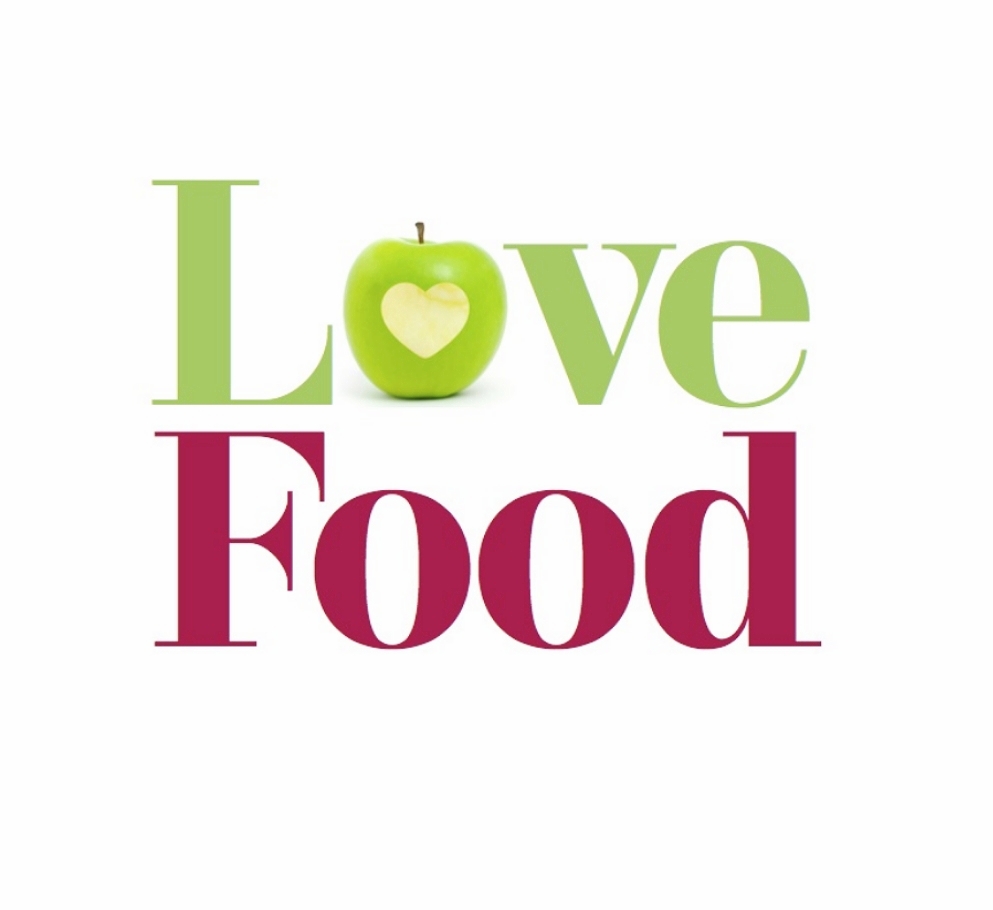



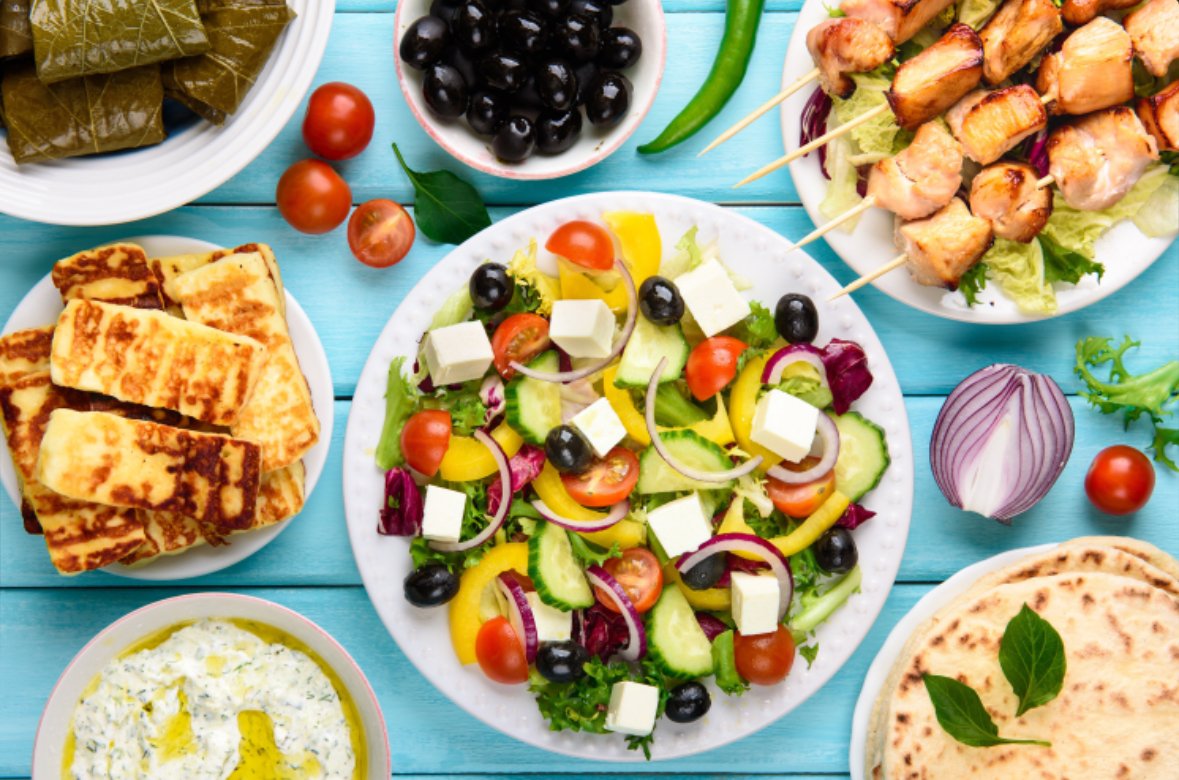












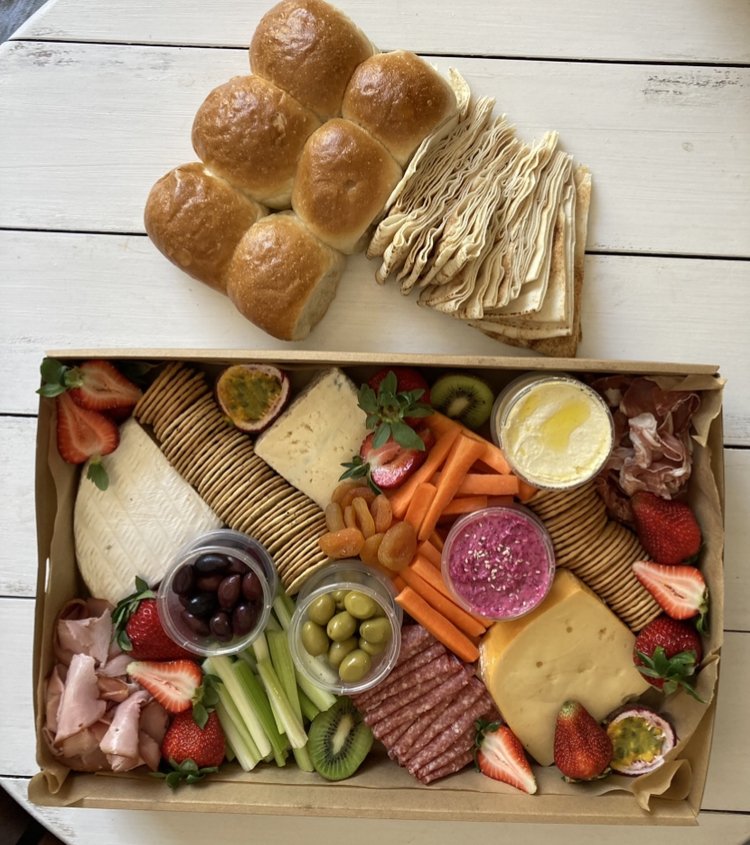
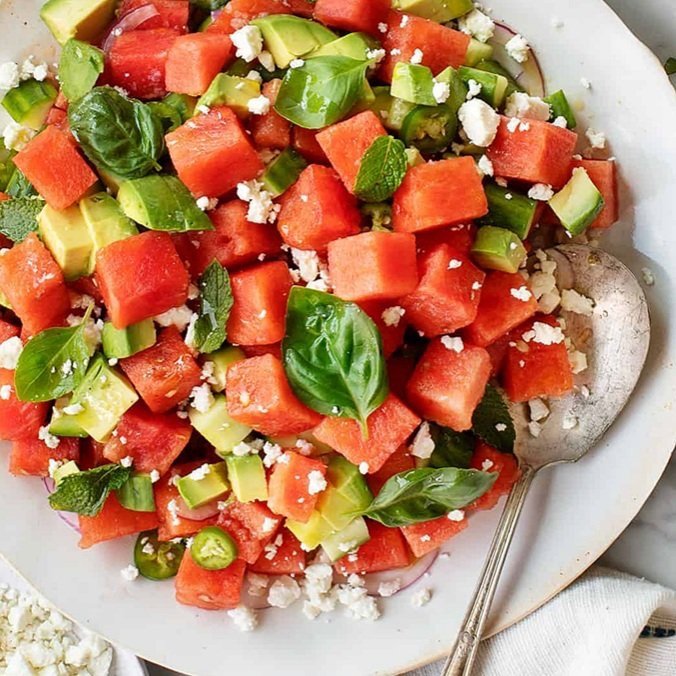




















































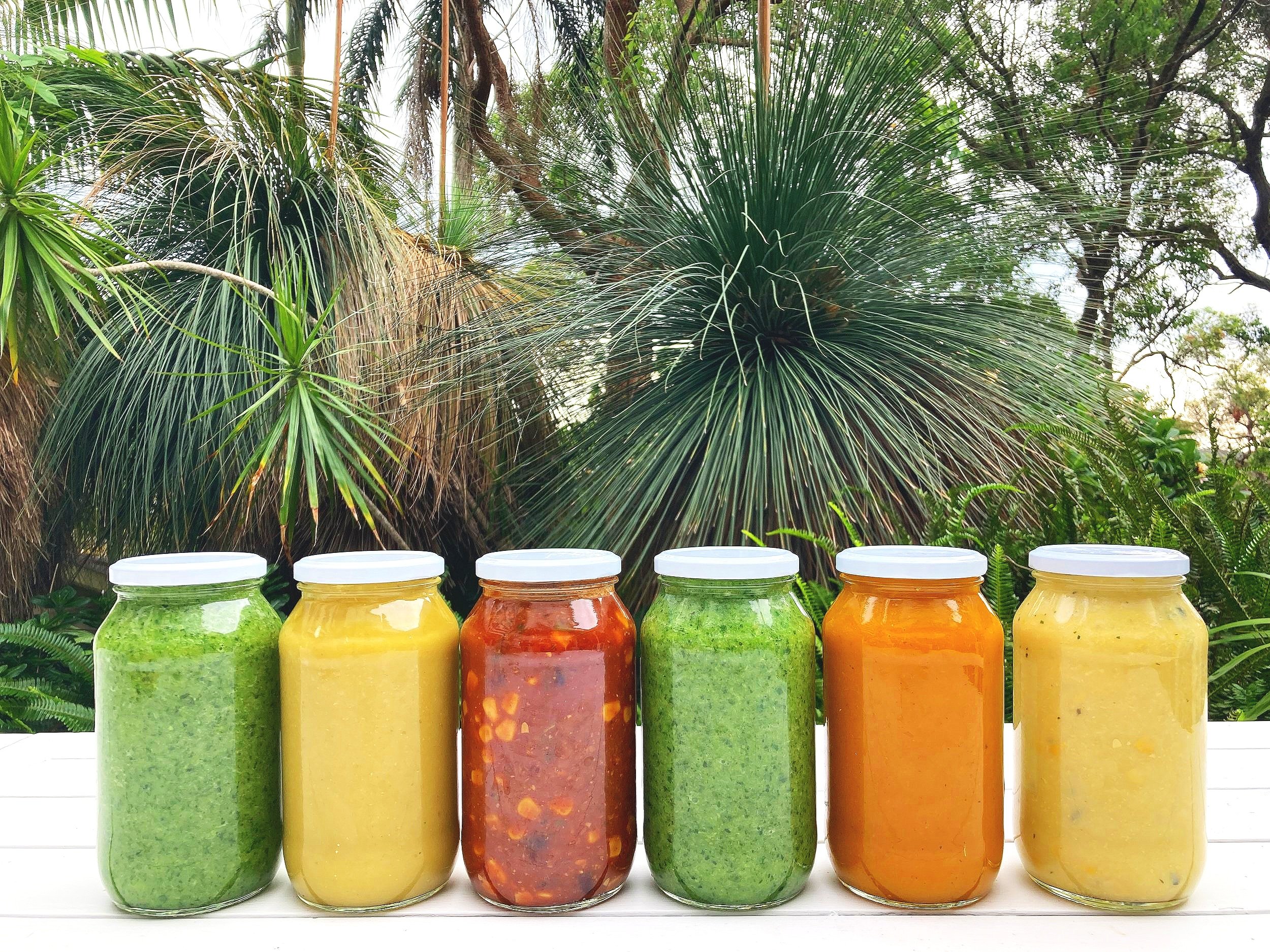
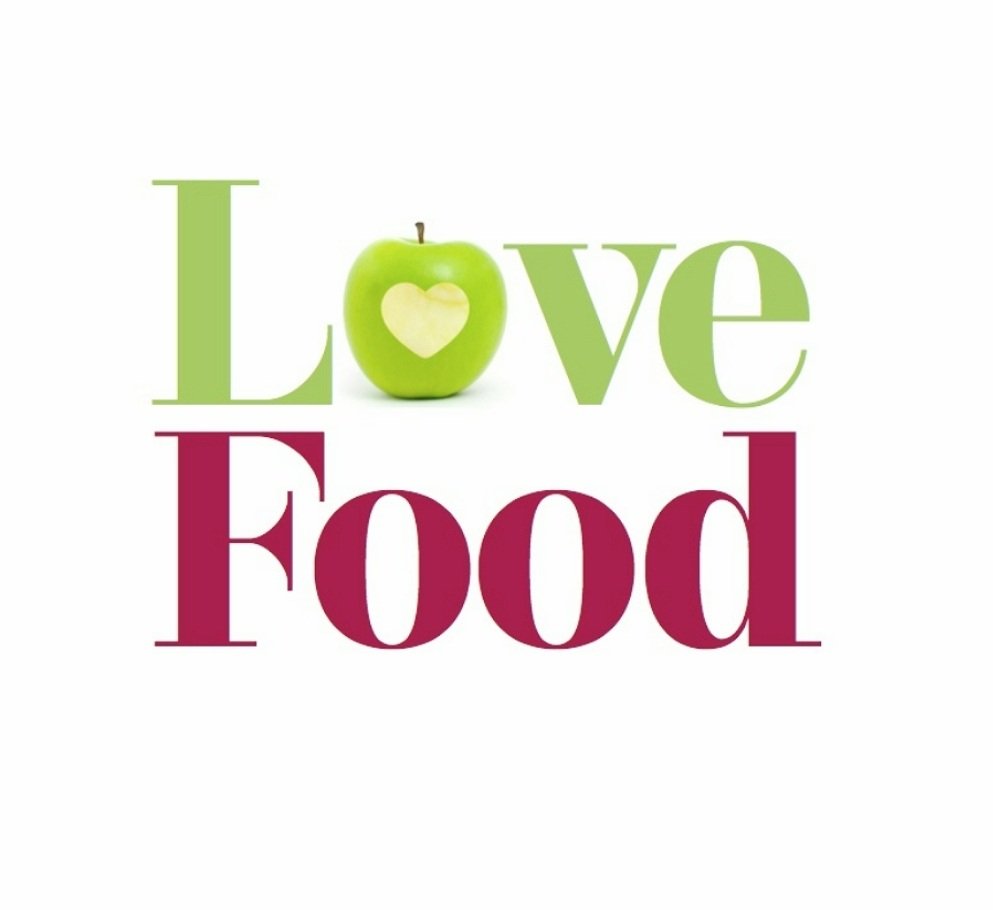




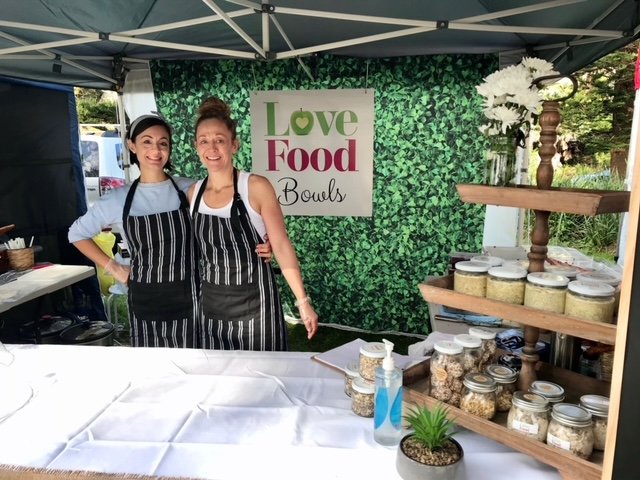


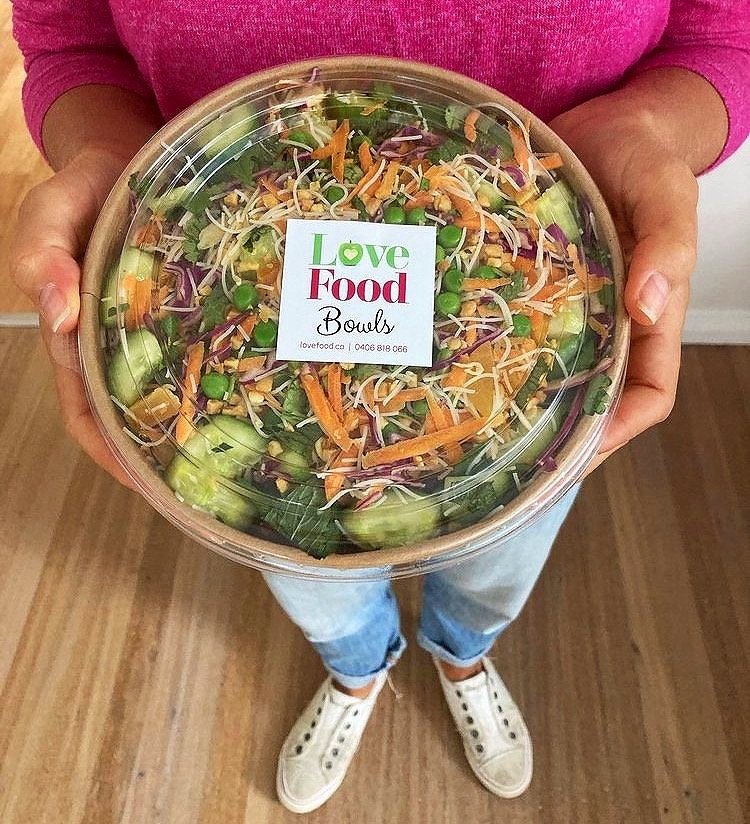
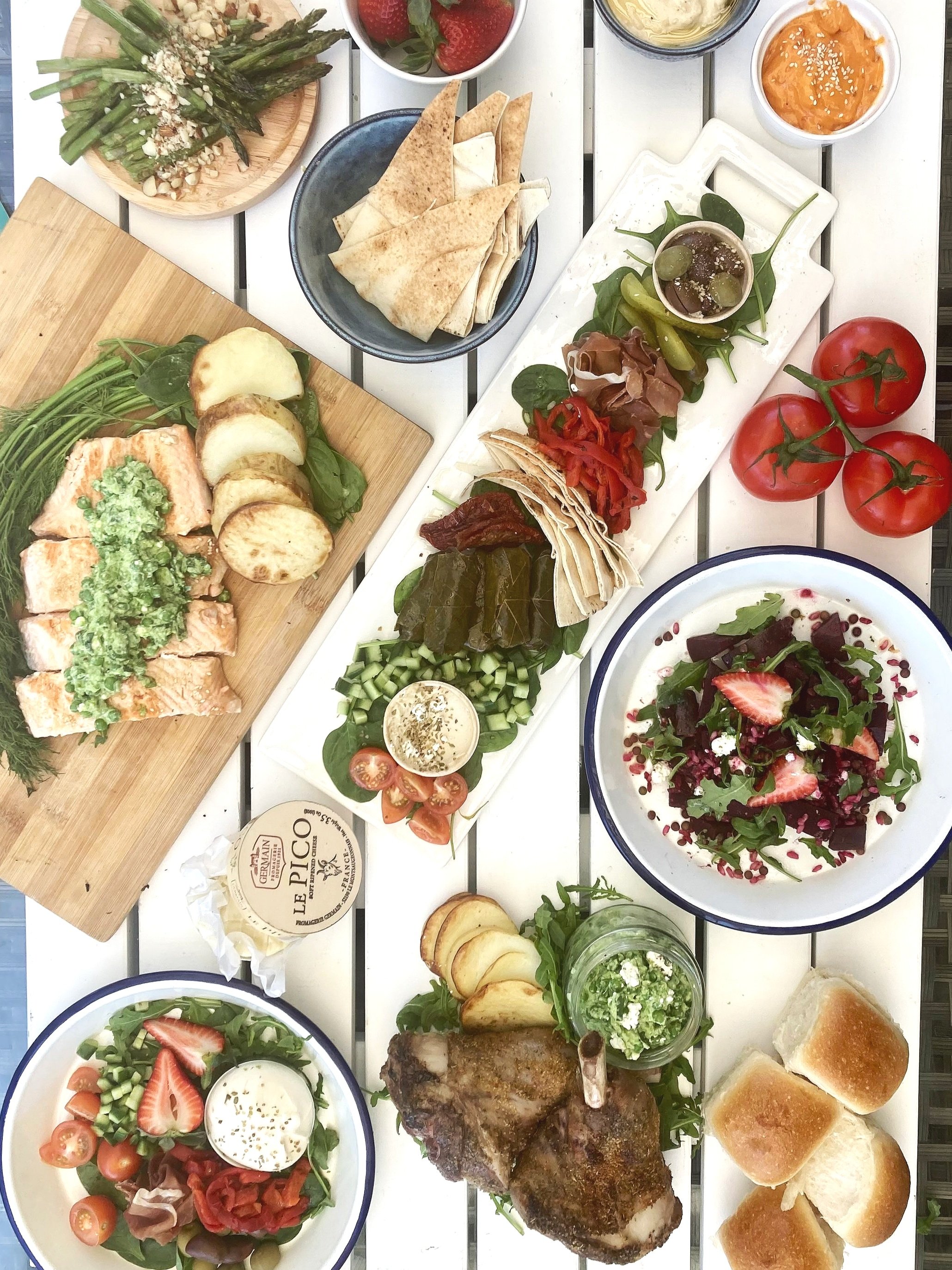
















































You bring the wine; we’ll bring the Food….
Any occasion, (Xmas Day till 12noon only)
Sharing Starters
selection cheeses & of cured meats, trio of dips, pickled vegetables, marinated olives, seasonal fruits & crudities
Grazing Main
Fresh Ocean Trout Side - topped with fennel, sesame seeds, lemon & extra virgin olive oil with smashed pea & mint puree
Slow Cooked Lamb Shoulder - Marinated in mixed herbs slow cooked for 12hrs
Stunning Sides
Crunchy Pearl Couscous - Tossed with apricot, herbs, cherry tomatoes, & smashed almonds
Rainbow Slaw - With fresh herbs, fine beans, radish & creamy vegan dressing
Goodness Greens - Seasonal greens with edamame, avocado, fresh herbs topped with seeds
Roasted Rustic Rosemary Potatoes - Served with garlic puree
Sourdough Bread
A selection of Bonfire bakery sourdough
Delicious Dessert
Flourless chocolate cake topped with double cream & fresh berries